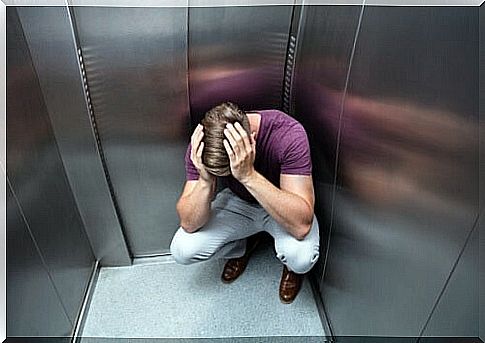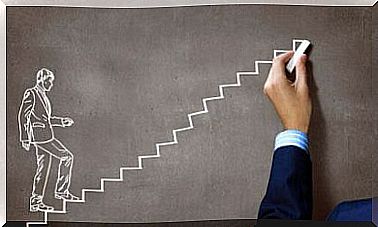Elevator Phobia: Causes And Symptoms

Fear is a natural response that has helped human beings in the course of evolution to save themselves from various dangers. For this reason, it is quite natural to be afraid of new situations or situations that we are not in control of. It is also possible, however, to be afraid of everyday objects, a fear that may have been acquired through indirect learning or following a traumatic experience. In these cases it becomes irrational and turns into a phobia. A prime example is the elevator phobia.
The elevator is a source of anxiety for many people, because it is a limited space, closed, isolated from the outside, able to bring out the most claustrophobic side in all of us. Some people fear it deeply, which is why it is impossible for them to access it or even think about what might happen if they did.

Symptoms of elevator phobia
The most common symptoms of any phobia are sweating, tremors, headaches, nausea, dizziness, rapid heart rate, hyperventilation, and even vomiting. We speak of phobia when these symptoms, in addition to extreme fear, occur for at least six months.
Although treated as a general phobia, elevator phobia encompasses two others: claustrophobia and acrophobia. The first is the irrational fear of closed spaces and limited dimensions. Acrophobia, on the other hand, is configured as the extreme fear of heights and elevated places.
Elevators fulfill both characteristics although some individuals feel more fearful of either. This leads the person to experience all the symptoms of anxiety when taking the elevator or thinking of reaching the top floor of the building.
What is the cause?
Elevator phobia typically develops following a traumatic experience. You have a better chance of developing it if you have been trapped in the elevator for a long time. It is also likely that such an experience was experienced by another person who conveys his fear.
Like others, this phobia can also be inherited, that is, you can suffer from the elevator phobia because a parent or another very close person during childhood constantly warned about the possible danger. But it can also happen that it manifests itself for no apparent reason.
Another possibility is that the person already had an anxiety disorder and had a fit while in the elevator. Anxiety works by association, so having experienced an intense state of anxiety in the elevator can cause the person not to use it to avoid repeating the same event.

How is it treated?
If the fear is not too intense, it may be sufficient to perform some breathing and relaxation exercises before entering the elevator. At the same time, it is important not to avoid the situation or engage in abrupt or compulsive behaviors that could make the experience even more traumatic.
It can also be helpful to be accompanied by a trusted person to feel more confident. This person may intervene if you need help or feel unwell. On top of that, being in company and being able to chat with someone can be an easy distraction to not focus on fear.
If these suggestions are not sufficient, it is preferable to consult a psychologist. The approaches in this sense are quite simple and mainly involve three strategies: cognitive restructuring, relaxation and systematic desensitization.
The first will try to change the beliefs or negative thoughts that interfere in the normal relationship between the person and the elevator. For example, by obtaining precise information on the number of accidents associated with the use of these facilities or on the possibility of being trapped in them.
Relaxation exercises, on the other hand, will focus on reducing anxiety symptoms before and during exposure to the lift. For its part, systematic desensitization consists in the gradual exposure to the object that causes fear.








